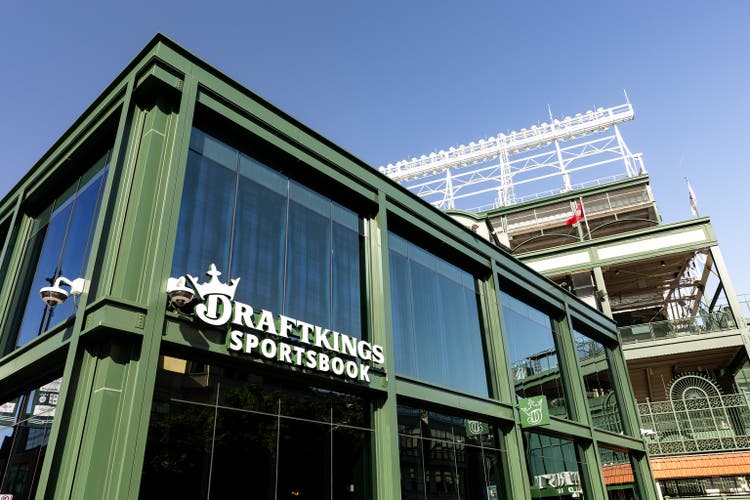Foot traffic at Target fell year over year for the sixth consecutive month in July, and while the slump began the week after the retailer backtracked on its diversity, equity, and inclusion (DEI) efforts, some analysts say the real culprit is that Target is slipping on retail basics.
In July, foot traffic at Target fell 3.8%, according to Placer.ai. Since announcing it was curtailing DEI on January 24, foot traffic has been down YoY for 25 of the last 27 weeks.
While media outlets (including this one) have linked Target’s traffic losses to it eliminating some DEI initiatives (and the ensuing backlash and a boycott led by Black clergy), Walter Holbrook, an industry veteran whose resume includes 28 years as an executive at Kmart, believes that a bigger issue is Target struggling with the basics.
Holbrook makes regular visits to a Target store in Jacksonville, Florida, and said that twice while shopping there on Sundays after church in the last two months, the store’s shopping cart corral was completely empty, something he documented once in a LinkedIn post. For the average consumer, the not-OK corral might have been just an inconvenience, but for Holbrook, a retail standard-bearer, “I could have exploded,” he told Retail Brew.
“That’s the fundamentals,” Holbrook said. “If you can’t get that right, you can’t get anything right. If you don’t know that carts need to be kept filled on a Sunday afternoon, you’re in the wrong business.”
Over the Fourth of July weekend, Neil Saunders, retail analyst and managing director at GlobalData, visited a Target and posted 15 photos on LinkedIn that documented shelves that were understocked (or completely empty), soiled, and in disarray.
Target is “still not getting the basics right,” Saunders wrote in the post. “Fixture after fixture, including lucrative endcaps, are devoid of product. Essentials like kitchen paper are completely out of stock.”
While there were “some nice ideas,” including a display with sundae toppings, “these things fall flat if you can’t get the basics right,” Saunders wrote. “Target is still training customers to ask: Why bother coming to the store?”
Target did not respond to Retail Brew’s requests for comment about the foot traffic data and reports of issues like poorly stocked shelves.
On August 10, the Wall Street Journal reported that about 40% of 260,000 Target employees who completed an internal company survey said they were not confident in the company’s future, a reported decline from a year ago.
“While we recognize the hard work and progress under way, we’re not where we want to be,” Target CEO Brian Cornell told the WSJ.
Middle ground: Ethan Chernofsky, CMO of Placer.ai, told Retail Brew that one of Target’s strengths is how it has found footing in what he calls the “bifurcation of retail” between luxury and value. Locating mini-stores within Target stores from retailers including Disney, Apple, and Casper creates a shopping environment that serves shoppers who don’t fit neatly in the luxury or value category but rather in the “middle” of both, Chernofsky said.
“The ‘middle’ is, ‘I will spend more on the Disney toy for my kid, I will spend more on my iPhone, but I want to save money on socks,” Chernofsky said. “[Target] nailed that for so long, and that was what set them apart and made their growth so unique and special.”
But in doing so, Chernofsky added, Target has raised expectations among consumers that they’ll have a more elevated experience than in a typical discount store, and he said his own experience is that the service at Target in the last year has not been as high as before, which he partly attributed to labor shortages faced by all retailers.
“Labor shortages are more significant for someone who’s trying to nail that middle area,” Chernofsky said. “For someone who’s super value-oriented”—as opposed to being in that value-luxury middle—“if you’re not getting great service at Five Below, you’re not like, ‘Oh my God, nobody said hi to me.’”
Ironically, perhaps, since his company’s data has been widely cited in documenting Target’s foot traffic declines over the last six months, Chernofsky believes the company’s ability to straddle discount and luxury is why it will rebound.
“I’m weirdly more bullish about [Target] than I’ve ever been because I think the issues are very fixable,” Chernofsky said. “They live in this place where no one else is existing today, and that’s a really good place to be.”
The cart of the deal: Cornell is expected to retire after his contract ends later this year and its board to choose a successor.
“This decision by the board for new leadership is the most important decision in years for Target,” Holbrook said, adding that he also admires the retailer even as he’s found the shopping experience there wanting over the last couple years.
“The retail industry is better off if we have a strong Target,” Holbrook said. “We need them to counterbalance everything else that’s going on, whether it’s Walmart or Amazon. We need that Target influence of fashion and style in the middle class that they can bring and capturing that aspirational shopper.”
A few days ago, on Saturday, August 9, Holbrook sent us a photo he’d snapped at about 11 am at his local Target. The photo was of the store’s shopping cart corral.
It contained a single cart.
This report was originally published by Retail Brew.
This story was originally featured on Fortune.com

 16 hours ago
1
16 hours ago
1






 English (US) ·
English (US) ·